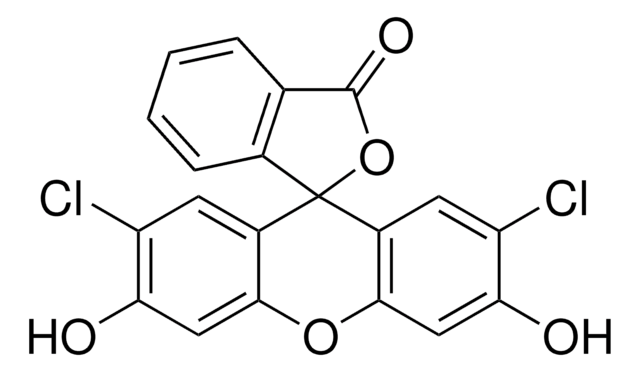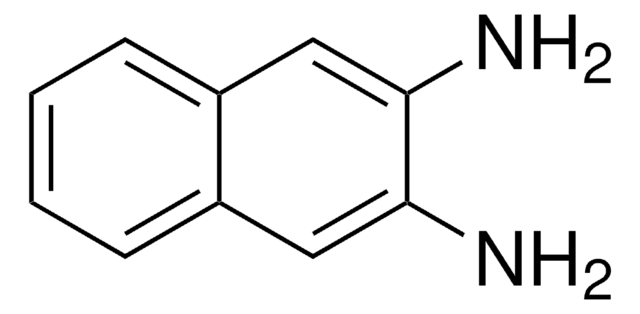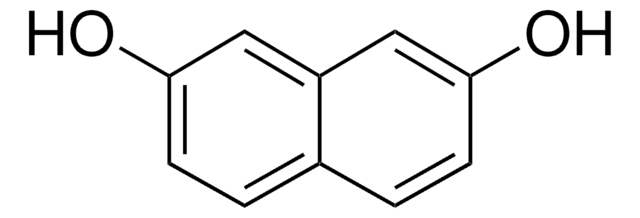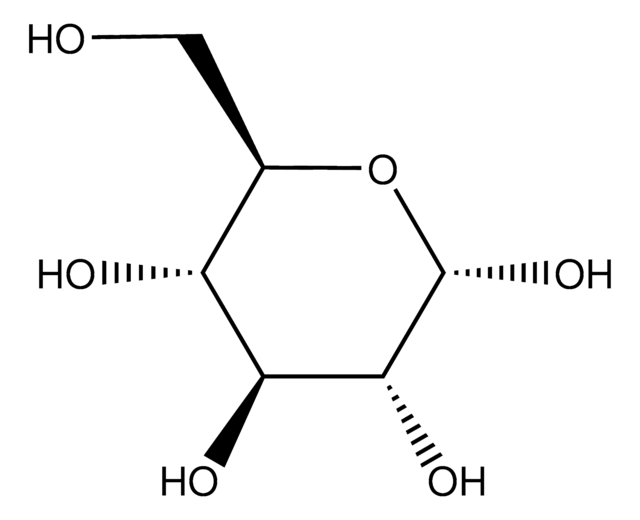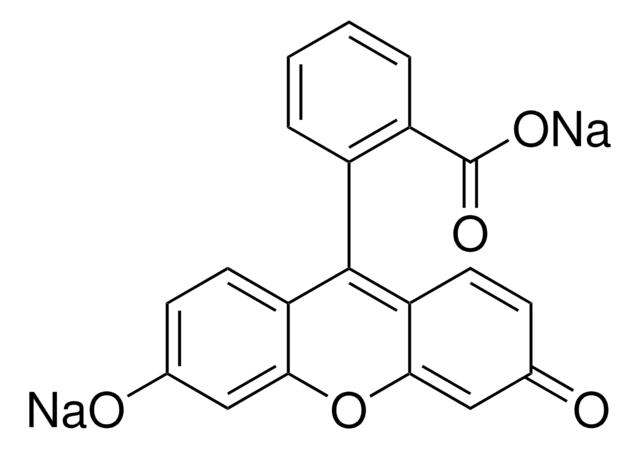Kluczowe dokumenty
410217
2′,7′-Dichlorofluorescein
ACS reagent
Synonim(y):
Dichlorofluorescein; Fluorescein 27
About This Item
Polecane produkty
klasa czystości
ACS reagent
Poziom jakości
Formularz
powder
metody
titration: suitable
kolor
orange to red-brown, powder
mp
280 °C (dec.) (lit.)
rozpuszczalność
alcohol: passes test
gęstość
0.790 g/cm3
λmaks.
509 nm
przydatność
passes test for adsorption indicator
Zastosowanie
diagnostic assay manufacturing
hematology
histology
temp. przechowywania
room temp
ciąg SMILES
Oc1cc2Oc3cc(O)c(Cl)cc3C4(OC(=O)c5ccccc45)c2cc1Cl
InChI
1S/C20H10Cl2O5/c21-13-5-11-17(7-15(13)23)26-18-8-16(24)14(22)6-12(18)20(11)10-4-2-1-3-9(10)19(25)27-20/h1-8,23-24H
Klucz InChI
VFNKZQNIXUFLBC-UHFFFAOYSA-N
Szukasz podobnych produktów? Odwiedź Przewodnik dotyczący porównywania produktów
Opis ogólny
Zastosowanie
Kod klasy składowania
11 - Combustible Solids
Klasa zagrożenia wodnego (WGK)
WGK 3
Temperatura zapłonu (°F)
Not applicable
Temperatura zapłonu (°C)
Not applicable
Środki ochrony indywidualnej
dust mask type N95 (US), Eyeshields, Gloves
Wybierz jedną z najnowszych wersji:
Masz już ten produkt?
Dokumenty związane z niedawno zakupionymi produktami zostały zamieszczone w Bibliotece dokumentów.
Klienci oglądali również te produkty
Nasz zespół naukowców ma doświadczenie we wszystkich obszarach badań, w tym w naukach przyrodniczych, materiałoznawstwie, syntezie chemicznej, chromatografii, analityce i wielu innych dziedzinach.
Skontaktuj się z zespołem ds. pomocy technicznej